25. Apr 2017 - DOI 10.25626/0062
Lorraine Weekes is a doctoral candidate in the Department of Anthropology at Stanford University. Her research ethnographically investigates Estonian e-government and its effects on Estonian conceptions of citizenship, nationalism, and state sovereignty. Lori’s background in archaeology informs her longstanding interest in heritage, collective memory, and the political uses of the past in the present.
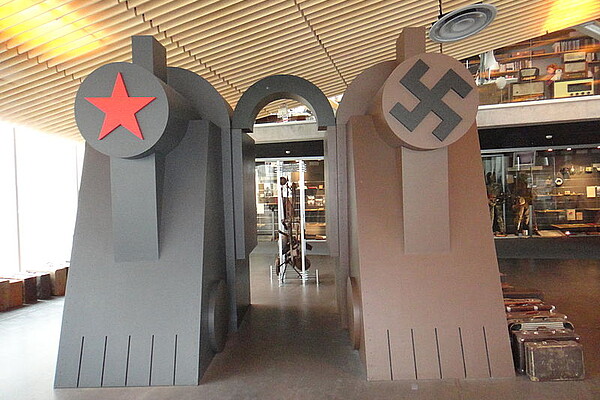
The early 2016 announcement that Tallinn's Museum of Occupations would be re-imagined and re-launched under a new name, "The Museum of Freedoms", brought swift and vitriolic critique from a diverse array of citizens, heritage groups, and politicians. After providing a brief contextualizing discussion of the Museum of Occupations’ founding and historical foci, this article analyses some of the key themes of the controversy surrounding the museum’s re-conceptualization and re-naming. It shows how the controversy emerged from competing ideas about the role that the narratives of Estonian victimhood should play at the museum and highlights the ways in which the debate was shaped by Estonia’s unique social and geopolitical context.
In 2003, Estonia’s Museum of Occupations opened its doors with the mission of researching and commemorating Estonian experiences under the Nazi (1941–1944) and Soviet (1940–1941, 1944–1991) occupations. The museum, a private institution founded by Estonian émigré Olga Kistler-Ritso, sits in the heart of Tallinn, Estonia’s capital. It is a few hundred meters from the central Freedom Square and – if you’re coming from the east or the south, en route to the parliament building and Stenbock House – the seat of the Government of Estonia. It is not out of the way. Despite this, most of the Museum of Occupations’ approximately 20 000 annual visitors have historically been foreign tourists; in recent years only about 2000 Estonians a year have found their way to the airy, modernist, museum.
One afternoon in mid-February 2016, the museum closed its doors for a press conference. A small stage was set up in front of one of its angular glass walls and a few dozen people sat before it in neat rows of white folding chairs. Merilin Piipuu, the museum’s director, sat stage right. Stage left was Sten Tamkivi, a museum board member and well-known Estonian entrepreneur with deep ties to Silicon Valley. Sandwiched between them, in his signature bow tie, was then Estonian President Toomas Hendrik Ilves. Tamkivi opened the press conference with the observation that occupation, the museum’s focal point, can be best understood as the absence of freedom. An enthusiastic, but vague allusion to exciting changes on the museum’s horizon followed. It was time, he said, for a “new chapter” in the history of the museum, time to launch the museum anew as a “thought-world start-up”, a civic society equivalent of the young and agile start-up firms of the private sector. After some back-and-forth with the president, Tamkivi turned to Director Piipuu for a description about the museum’s new chapter. As Piipuu spoke, the facts, figures, and concrete plans behind the press conference and the introductory expositions of freedom became clearer: the museum would double its exhibition space and broaden its focus. It would tell the story of Estonia’s occupations, but also share the stories of those who died during the Holocaust, were deported to Siberia, or exiled to the west. Moreover, it would tell the story of Estonia’s embrace of freedom in the years since 1991; the underlying goal was to become not just an exhibition space, but also a gathering place where Estonians, especially youths, could come to contemplate and debate the meaning of freedom. To reflect this new and broadened focus, the museum would change its name from the “Museum of Occupations” to the “Museum of Freedom.” Presumably riffing off the success Estonia’s modern art museum had achieved with the nick-name “Kumu” (a portmanteau of kunst and muuseum, the Estonian words for art and museum), the Museum of Freedom would go by the appellate “Vabamu”, an analogous mash-up derived from vabadus, the Estonian word for freedom, and muuseum. The substantially renovated and re-envisioned museum would open in 2018, the Republic of Estonia’s centennial year.
The public response to this announcement was swift and largely critical. People were angry and upset. Rhetoric flew. Mart Helme of Estonia’s far right Conservative People’s Party of Estonia alleged that the politicians on Vabamu’s honorary fundraising committee lacked even the slightest awareness of the loss of life and physical and emotional suffering wrought by the occupations.[1] Jaak Jõerüüt took issue with Vabamu’s plans to “stuff freedom into a single museum” and its abbreviated name. He sardonically suggested that the museum’s board should make a single museum about occupation and freedom and fraternity and equality and reflect its motley subject matter with a nickname like “OccuFrEqMu” (Okvavõvemu).[2]Other critiques were less cutting, but no less critical of the proposed changes. The museum’s exponents were quick to fight back, championing their plans through editorials and interviews.[3]
One of the most immediate and sustained flashpoints of controversy was the planned name change, and especially the proposed shorthand Vabamu. For many of Vabamu’s critics the nickname’s hip sound and truncated form smacked of distasteful flippancy. At least two of Vabamu’s opponents cited the Latin maxim nomen est omen – the name is a sign – in explaining their hostility to the museum’s new moniker.[4] For these authors, the change from the “Museum of Occupations” to “Vabamu” was problematic not just in and of itself, but also as a harbinger and symbol of the larger re-imagining of an institution that has historically foregrounded narratives of Estonian suffering and victimization.
Though the Museum of Occupations routinely hosts temporary exhibits, much of its exhibit space has been left virtually unchanged since its opening. The museum’s first floor is a single light-filled room with high ceilings. Glass cases filled with the museum’s permanent exhibit line about a third of the room’s perimeter: military uniforms, firearms, housewares, handcuffs, and old telephones sit on glass shelves with small Estonian-language placards. The artefacts are organized chronologically and divided into seven temporal periods. Above each section, a TV-screen plays documentary footage about the period. Scholars analysing this permanent exhibit have emphasized the ways in which it reinforces the binary between blameless Estonian victims and the violence of the occupiers. Meike Wulf’s discussion of the museum is subtitled “a claim for victimhood”[5] and Jörg Hackman and Markko Lehti characterize the dominant purpose of the museum as an effort “to present the Estonian nation as a victim of the Second World War and to legitimize its position with regard to domestic as well as foreign visitors”.[6]
While the word ‘occupations’ may be missing from the short form of the museum’s new name, there is every reason to believe that Estonia’s history during the 1940–1991 period will remain a central part of Vabamu’s substantive focus. The Vabamu campaign website makes clear that “occupations” will be one of Vabamu’s key themes (along with resistance, restoration and freedom) and that the museum will remain committed to documenting and describing Estonia’s history of occupations. In many of the interviews she has given about Vabamu, the museum’s director Merilin Piipuu emphasizes that the square footage dedicated to representing the period of occupations will actually increase in the new museum. Likewise, Sylvia Thompson – the daughter of Olga Kistler-Ritso and the current president of the Kistler-Ritso Foundation, which funds and oversees the museum – stressed Vabamu’s continued engagement with Estonia’s history of occupations in an early 2016 speech. “The stories of real people who lived in that terrible time of occupations: those whose lives were tragically lost, and those who survived; those who were deported to Siberia, those who fled West, and those who stayed” will remain, she promised, “at the heart of Vabamu.” Later in the same speech, however, Thompson offered an implicit defence of the plans to broaden the museum’s thematic scope:
Estonia is remarkable not for its victimhood – sadly, there are far too many victims of evil in this world. Estonia is unique for its non-violent ‘Singing Revolution’ and it’s quick ascent to one of the most successful democracies in the world today […] These are things we can be proud to show the world.[7]
Thompson’s words, along with those of other Vabamu exponents, suggest that although the museum’s substantive engagement with the 1940–1991 period of Estonian history will persist, the current Museum of Occupations’ unwavering emphasis on Estonian victimhood and suffering will be phased out.
A few months before the official announcement of the changes at Vabamu (and the resulting backlash), Piipuu was cited in an article by Estonian World, an English-language blog targeted at the Estonian diaspora, explaining that, “[w]e do not just want to provide this narrative of suffering and victimisation, but give more hope to people and talk about freedom and how Estonian people got their freedom and what their recovery process was.” She then offered an applied example of what this more multivocal treatment of Estonia’s history of occupation might look like.
At the moment you can probably see only the most horrible stories [in the Museum of Occupations], but I have just met this woman who was in Siberia when she was a small child until she was six years old. She was saying how it was a really great time, how they played around and she was the head of her school class and what a great time she had – and that is what she remembers and we should tell this story as well.[8]
Vabamu may continue to feature stories and artefacts from the period of occupations, but all signs suggest that its discursive framing of those materials will diverge from the Museum of Occupations’ singular and prescriptive emphasis on Estonian suffering and victimhood.
Museums are not just “storehouses of humanity’s heritage”[9], they are simultaneously “inscribed in and inscribers of collective and individual memory, identity, and practices”.[10] In emphasizing Estonians’ historical victimization at the hands of the Soviets, the Museum of Occupations has both reflected and solidified the prominent position of victimhood and suffering in Estonian national identity narratives. Scholars of memory culture and heritage in Estonia have consistently recognized the role of collective victimhood in Estonian national identity.[11] In Estonia, as elsewhere, “the cult of past martyrdoms and the awareness of contemporary dangers to national honour, sovereignty, and/or security are […] intertwined in a dynamic, ever-changing relationship”.[12] One extension of this is the suggestion that Estonia’s national victimhood should be considered alongside contemporary Estonia’s achievements and should not be privileged to the total exclusion of personal histories that speak to individual happiness under occupation or the normalization of late socialism is perceived by many as not just wrong, but also dangerous. The same self-reflexive and multivocal approaches to the past that Vabamu’s proponents boast will increase attendance numbers and enable Estonian youth to meaningfully engage with and learn from Estonia’s history of occupation, are perceived by Vabamu’s critics as imperilling the significance and memory of that same past. Solnask’s allegation that museum’s name change and reconceptualization threaten to “diminish the occupation era in Estonia”[13], and Helme’s assertion that it “is our duty to remind our nation, its allies, and the rest of the world that we have been occupied and that suffering has been inflicted on us”, are representative.[14]
Many of the arguments by Vabamu’s critics’ about the importance of recognizing victims, remembering atrocities, and condemning their perpetrators are reminiscent of those found in memory politics contestations in other parts of the world.[15] Also running through critics’ concerns about the dangers of forgetting the past and repeating history, however, are two fairly Estonia-specific critiques of the proposed changes. First, several authors asserted that Vabamu grew out of a short-sighted excitement about Estonia’s growing status as a leader in technology and e-governance. These critics alleged that in their effort to celebrate Estonia’s successes in the years since re-independence, the museum’s board was allowing the story of Estonia as an e-government leader characterized by “freedom of entrepreneurship” to displace the more foundational account of Estonian survival and suffering.
In the years since its 1991 independence from the Soviet Union, and especially in the last decade, Estonia has established itself as a leader in e-governance and technological innovation. Estonian banks introduced electronic banking in 1996 and a few years later, a mandatory national electronic ID-card was introduced. Estonians can vote, pay taxes, and check their health records online, and promoting Estonia’s reputation as a leader in all things “e” has become an important part of the country’s nation-branding efforts.
Responding to Sten Tamkivi’s comments about Vabamu as a ‘start-up’ of sorts, Jaak Jõerüüt asserted that “with all respect to those who work in the IT and start-up world, the notion of a ‘thought-world start-up’ in this context is comically absurd.”[16] Others saw the entire project, not just its framing as a start-up, as tied to “e-Estonia”. In his provocatively titled opinion piece “Welcome to the e-Occupation Museum” Marcus Kolga argues that the Museum of Occupations is a casualty of the drive to frame Estonia as a tech leader: “e-Estonia’s appetite to remember the evils of Nazi and Soviet terror has soured as the country marches towards the blinding shimmer of a start-up powered e-future”.[17] Kolga’s piece ran on Estonia’s public news as well as on the blog of his media site UpNorth. Accompanying the piece on the UpNorth blog was an image of a smiling cartoon communist standing next to Vabamu; a large Skype logo has been photo-shopped onto the side of the museum (see picture).
Skype is an internet voice and video chat software that was developed by Estonian programmers in the early 2000s and remains a prominent symbol of Estonian national pride. In his commentary on the museum’s planned changes, Markus Järvi similarly used Skype as shorthand for alluding to the narrative of Estonia as a leader in all things “e”. Järvi suggests that for the “Vabamu crowd” remembering the deprivation and suffering of Estonians deported and murdered under communism is “totally ‘out’”, and then mimicked the stance of the “Vabamu-types” he was critiquing:
Come on, forget that suffering already! We are already in NATO and the American soldier boys want to die on our behalf so we can keep drinking coffee shop lattes and developing Skype.[18]
Here, “drinking lattes” and “developing Skype” are symbols of vapid consumerism and an ahistorical celebration of Estonia’s tech prowess. In Järvi’s account, Vabamu is thus linked to the encroachment of the new narrative of Estonia as a tech-leader onto an older and more central reading of Estonian identity.
The smiling communist giving a thumbs-up sign next to the Skype branded Vabamu alludes to a second geographically-specific accusation lobbed at Vabamu by its critics: the rebranding of the Museum of Occupations as Vabamu helps rehabilitate Soviet crimes and plays into the Kremlin’s delusional and dangerous assertion that Estonia’s participation in the Soviet Union was voluntary. Russia’s foreign ministry has previously criticized the Museum of Occupations for equating Nazism and fascism and presenting the Soviet period as exclusively and unequivocally an unwelcome and illegal occupation.[19] Furthermore, in the years since the Museum of Occupations opened, symbols of Soviet power, even those like Josef Stalin that were once denounced for their connection to communist atrocities have come to play an important role in the contemporary national-image of an increasingly bellicose and unpredictable Russia.[20] In this context, Vabamu’s turn away from an exclusive and eponymous focus on occupations is perceived as not just political, but also geopolitical: a concession to a Russian representational regime that denies, or at the very least questions, the sovereignty and suffering of the Estonian people at the hands of their Soviet occupiers.
When former political prisoner and Estonian re-independence activist Enn Tarto, whose activism and political persecution under the Soviets are well documented in the Museum of Occupations, spoke out against the proposed changes on the national news, he suggested that the change would serve Russian political interests and noted that he had “heard many a communist shout that there was no occupation at all”.[21] In this account, an unwavering and uncompromising commitment to articulating and disseminating a unified, strident, and consistent national narrative of illegal occupation is important, in part because of the purchase and persistence of alternative versions of the past. The impenitent representational regime of Putin’s Russia leaves little room for Estonian multivocality or self-reflexivity about collaboration. In his discussion of Vabamu, Marcus Kolga alleged that “Vladimir Putin and his legion of crypto-Soviet propagandists are no doubt licking their lips: the Estonians themselves are completing their work for them”, and then provided an litany of the ways in which Putin has worked to deny the occupation of Estonia and embolden alternative readings of the Soviet past.[22] In these repeated gestures towards Putin and Russia, critics of Vabamu are concerned with how the re-fashioning of the museum will register within an international landscape where symbols and narratives from the Soviet past are relied on to rally support for a contemporary regime that denies the sovereignty of other post-Soviet states like Ukraine and Georgia. Collectively, their criticisms illustrate Aleida Assmann’s argument that memory politics and heritage regimes operate not only at the national, but also the transnational level.[23]
The spring 2016 announcement that the Museum of Occupations would become the Museum of Freedoms and that its historically singular focus on the occupations would be augmented (or diluted) by an engagement with the themes of resistance, restoration, and freedom generated outcry that reverberated through Estonian public media for weeks. Since victimization and suffering at the hands of the Nazis and Soviets, but especially the Soviets, are an important part of how many Estonians understand their national history and help to make sense of what it means to be Estonian, the museum’s plans to present these aspects of the occupations alongside stories that speak to resistance, restoration, and freedom were perceived by many as both misguided and dangerous. Some of the explanations offered for this belief were specific to the Estonian or post-Soviet context, e.g. the contention that the proposed changes are linked to a misplaced enthusiasm surrounding “e-Estonia” or will play into Russian neo-imperialism.
In his introductory remarks at the press conference announcing the transformation and re-branding of the Museum of Occupations, then President Ilves suggested that freedom was being able to act and speak according to one’s own will. During the question and answer session that followed the press conference, Mari-Ann Kelam – an Estonian parliamentarian who was born in a German displaced persons’ camp and raised in the United States – challenged this definition. Freedom, she asserted isn’t “just about doing what you want, there’s an important other side to it: responsibility”. Living in Estonia, she continued, means not just enjoying the liberties that come with life in a peaceful and democratic country, but also shouldering the responsibility of working to make society better. The re-conceptualization of the Museum of Occupations as Vabamu, Kelam feared, would hurt the museum’s ability to educate visitors about this Janus face of freedom, about the duties that come along with liberty.
Undoubtedly, some of Vabamu’s critics were opportunistic in flaming the controversy surrounding the museum for personal political gain. However, many of the opinion pieces commenting on, or decrying the change at the museum have, like Mari-Ann Kelam’s comment, thoughtfully, if at times polemically, engaged with the question of what it means to be free of occupation without forgetting or dismissing the horrors and suffering it brought. In one way or another, many of the issues and debates connected to the re-conceptualization of the Museum of Occupations touch on, or intersect with, the very questions Vabamu intends to inspire dialogue around: how is a private organization’s freedom of speech functionally circumscribed by the moral and political claims of other social actors? What type of engagement with the post-communist past will best ensure its horrors are “Never Again!”[24] repeated in Estonia? Without ever having opened its doors, Vabamu has emerged as a site of discussion about the meaning and limits of occupation and freedom in contemporary Estonia.
Lorraine Weekes: Debating Vabamu: Changing names and narratives at Estonia’s Museum of Occupations. In: Cultures of History Forum (25.04.2017), DOI: 10.25626/0062.
Copyright (c) 2017 by Imre Kertész Kolleg, all rights reserved. This work may be copied and redistributed for non-commercial, educational purposes, if permission is granted by the copyright holders. For permission please contact the editors.
See the introductory video to the new permanent exhibition
See the official website of the Museum of Occupations in Tallinn
For those who read Estonian, this detailed analysis of the "Vabamu debate", written by Dr Ene Kõresaar and Dr Kirsti Jõesalu and published in the Yearbook of the Estonian National Museum 2017, is worth reading!
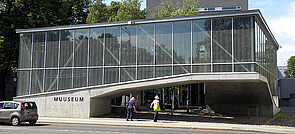

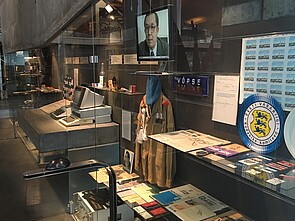
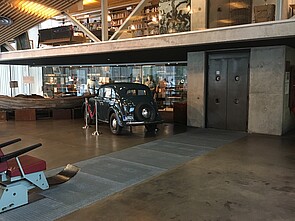
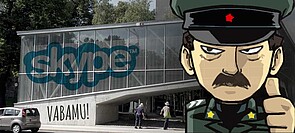
Heiko Pääbo and Eva-Clarita Pettai · 27.03.2019
A Museum of Memories: The New ‘Vabamu’ in Tallinn
Read more
Kara Brown · 05.07.2018
Layered Spaces of Meaning: The Estonian National Museum
Read more
Heiko Pääbo · 25.10.2015
"1944" vs. 9 May – An Attempt at Reconciliation Instead of Vigorous Glorification: Estonia Commemora...
Read more
Maria Mälksoo · 30.04.2014
Estonia - The Ukrainian Crisis as Reflected in the Estonian Media
Read more
Get this article as PDF download (including pictures).